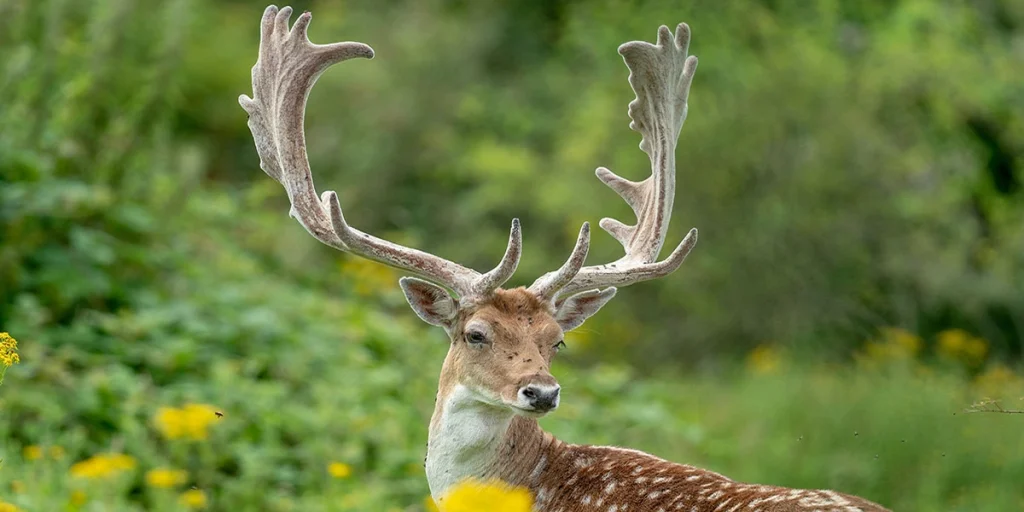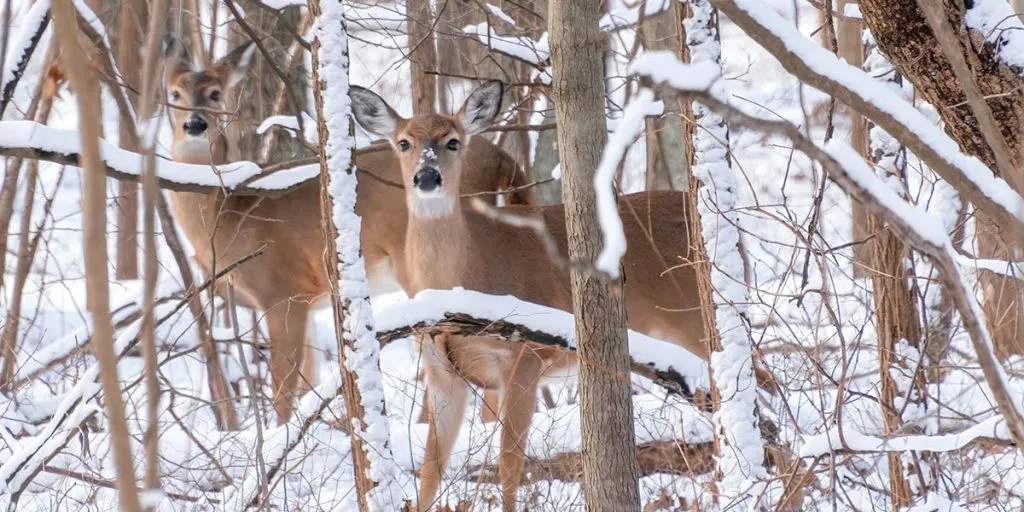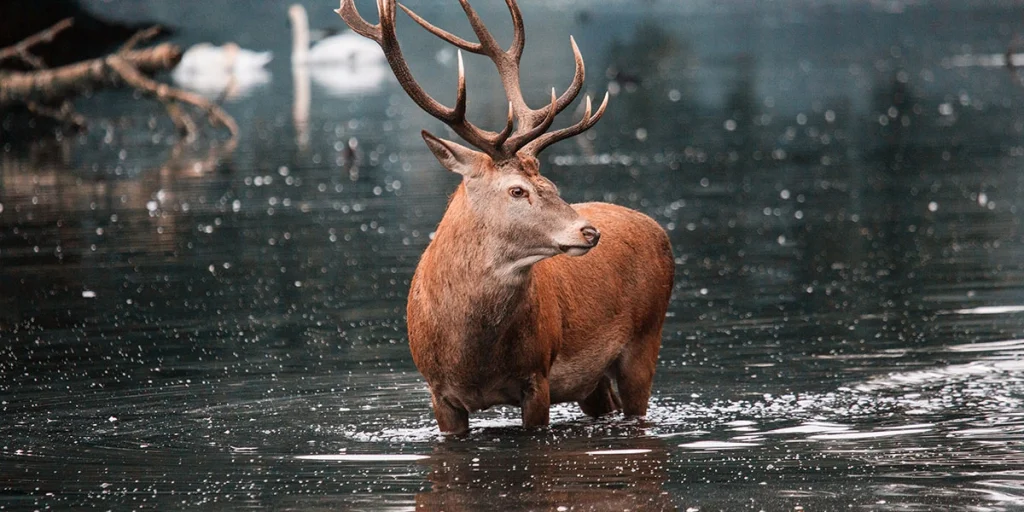The antlers are one of the most eye-catching and magnificent parts of a deer. The branched horns typically grow on top of the head of a male deer, also known as a buck. You might be surprised to learn what the so-called ‘deer crown’ is actually made of.
Deer antlers are an extension of the skull made of bone, cartilage, fibrous tissue, skin, nerves, and blood vessels. The antlers are one whole bone structure that a deer will shed and regrow every year. After shedding, the antlers regrow from the tip of the bone on the head of the animal.
Because of their regenerative ability, the beautiful extensions on the head of a buck are often seen as a symbol of spiritual authority. They are also seen as a crown, growing towards the heavens. There are so many interesting facts to learn about the structures, so let’s explore them together.
Deer Antlers Are Mainly Made Of Bone
There’s often a lot of confusion about what antlers are made of. That’s because the bone on top of a buck’s head is usually covered with a thin “velvet” layer. This part is actually where the skin and blood vessels are located.
The velvet layer of a deer antler can almost look soft. This is what usually makes people think antlers are made of keratin (the body tissue where nails and hair are made of). However, this is a common misconception.
The confusion exists because animal horns are actually made of keratin, which is different from antlers found on male deer in many ways. Let’s explore the most important differences between horns and antlers.
Antlers vs. Horns: 5 Main Differences
The U.S. Fish & Wildlife Service (FWS) made a good overview of the main differences between antlers and horns. Both are hard structures that extend the animal’s skull, usually meant as a defense against predators or to fight others of their own species for mating or dominance purposes.
The five main differences between antlers and horns are these:
- Antlers are mainly made of bone, while horns are mainly made of keratin
- Horns grow over the lifetime of the animal, while antlers are shed and regrown annually
- Antlers (re)grow from the tip of the bone, horns grow taller from the base
- Horns are always a two-part structure, while antlers are one singular structure
- Antlers always branch out, while horns will not
Bucks Don’t Feel Pain In Their Antlers
While nerves exist in large numbers in the velvet cover of deer antlers, a buck will have no feeling at all when the structure is completely done growing. Therefore, a deer is unable to feel any pain in its antlers. This allows the animals to more easily use their antlers to fight with other males.
It’s a good thing that a buck is not able to feel with its antlers for two main reasons. First, bucks will use the structure as a main weapon to compete with other males. Bucks will fiercely fight and use their dangerous antlers in order to secure mating rights with nearby females.
The other important reason involves the annual shedding process. This is actually one of the most interesting activities a male deer will repeat every year. Let’s explore this process in a bit more detail below.
Shedding Antlers
Bucks shed their antlers periodically, and will usually start to regrow them after the winter season so they are ready for the rutting season (from late October to December) and they will regrow over time.
It’s a 2-3 week process to shed antlers, and it’s one of the more interesting recurring events that make deer extremely interesting. A buck will shed its antlers due to a shift in hormones. After the rutting season ends, the testosterone levels of a buck go down a lot.
The lowered testosterone makes the antlers more fragile and allows them to easily break up. Bucks will use trees, rocks, or other solid structures to rub their shedding antler remains against, so they eventually completely fall off. This process repeats itself every year, and you can definitely find antler remains in nature!
The Importance Of Antlers
The massive natural bone structure on top of a deer’s head is of extreme importance. As mentioned before, bucks use their antlers to fight with other males and make sure the new generation of fawns is born in time.
Not only is the head structure a powerful weapon during the rutting season, but it’s also a tool of seduction. Humans admire the beauty of the branched antlers, but female deer (doe) get weak in their knees from them. They are a means to seduce a female and help the mating process.
While hunters will love to show off a beautiful pair of antlers on their wall of trophies, casual animal lovers will enjoy finding the remains of the structures out in nature. Those who go out to find them after rutting season can definitely find some cool trophies to take home!



